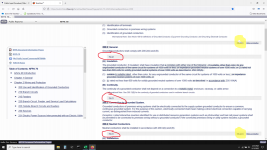Christoph
Master Electrician, Code Official
- Location
- Coopersburg, PA
- Occupation
- Electrical Inspector
Hello Friends,
I have currently passed my master exam and am a registered Master Electrician in my town now. Went through Mike Holts' Library to prepare and I must say it was worth every one of the $1,800 I spent on it.
Anyway ... as Mike points out I am wanting to be a contributor and make a public input to propose a change to the code. I have read the instructions on NFPA.org and I see that the deadline for the second draft inputs ended August 19, 2021.
Question: Do I just hold on to my suggestion for three years ir is there a way to record my input? Does anyone have experience with Public Input or getting involved in the code making process? Would be happy about any pointers.
Thank you for everyone in participating in this. Glad to be part of the community.
I have currently passed my master exam and am a registered Master Electrician in my town now. Went through Mike Holts' Library to prepare and I must say it was worth every one of the $1,800 I spent on it.
Anyway ... as Mike points out I am wanting to be a contributor and make a public input to propose a change to the code. I have read the instructions on NFPA.org and I see that the deadline for the second draft inputs ended August 19, 2021.
Question: Do I just hold on to my suggestion for three years ir is there a way to record my input? Does anyone have experience with Public Input or getting involved in the code making process? Would be happy about any pointers.
Thank you for everyone in participating in this. Glad to be part of the community.



 ).
).